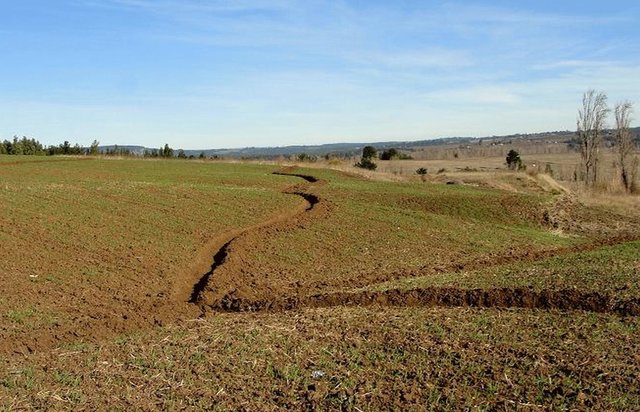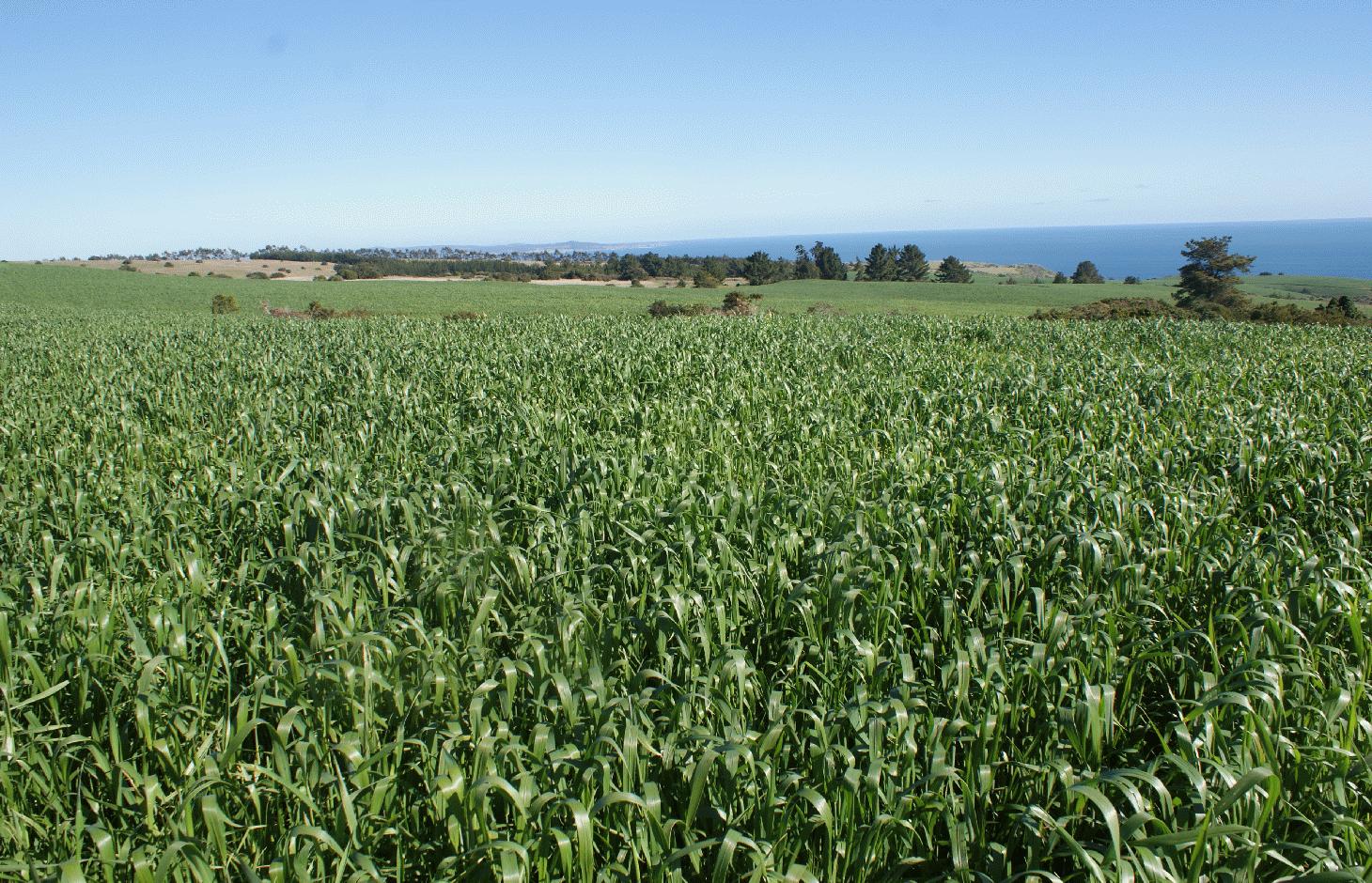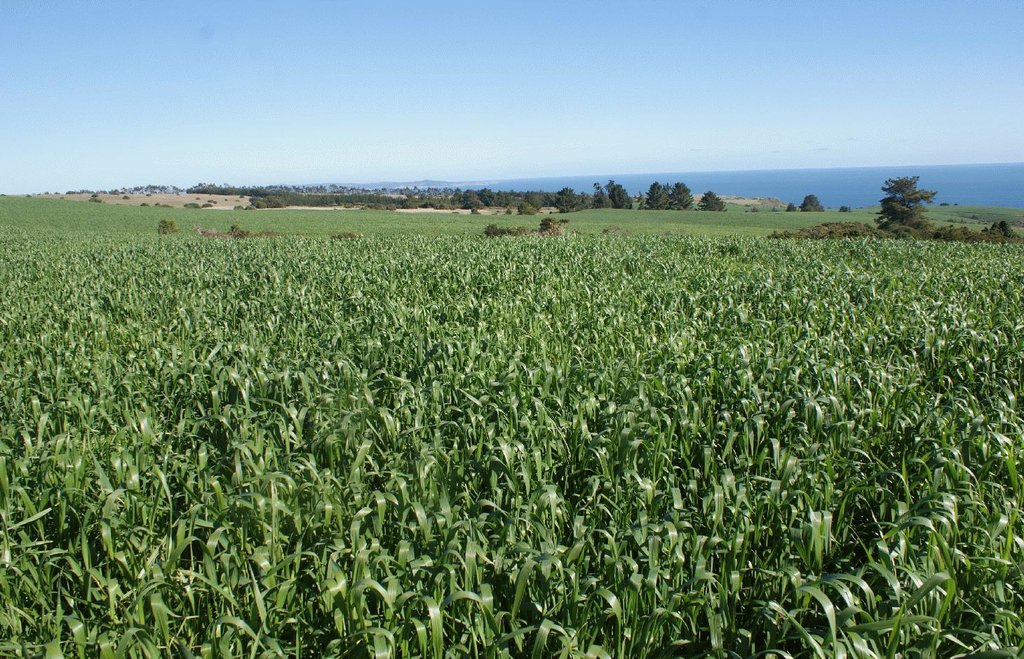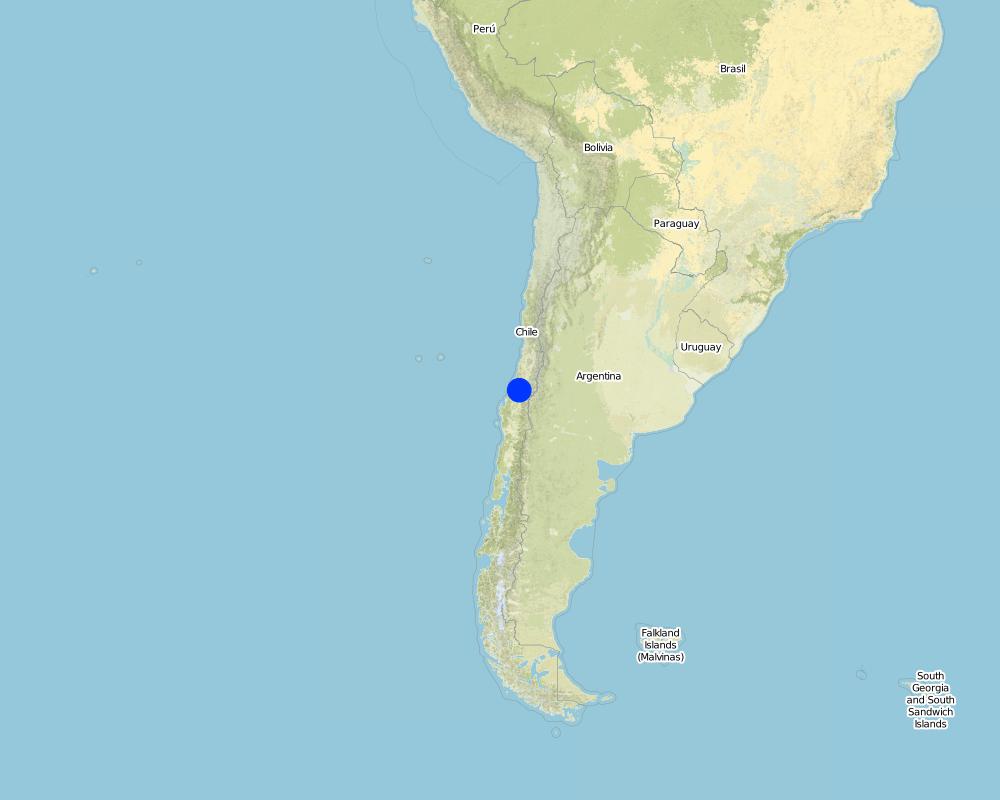Crop rotation with legumes [Чили]
- Шинийг нээх:
- Шинэчлэх:
- Эмхэтгэгч: Carlos Ovalle
- Хянан тохиолдуулагч: –
- Хянагчид: Deborah Niggli, Alexandra Gavilano
Rotación de cultivos con leguminosas (Spanish)
technologies_1123 - Чили
Бүлгүүдийг үзэх
Бүгдийг дэлгэх Бүгдийг хаах1. Ерөнхий мэдээлэл
1.2 Технологийг үнэлэх, баримтжуулах ажилд хамаарах мэдээлэл өгсөн хүмүүс, байгууллагуудын холбоо барих мэдээлэл
ГТМ мэргэжилтэн:
Soledad Espinoza
Instituto de Investigaciones Agropecuarias
Чили
Технологи баримтжуулах/үнэлэх ажилд дэмжлэг үзүүлсэн төслийн нэр (шаардлагатай бол)
DESIRE (EU-DES!RE)Технологи баримтжуулах/үнэлэх ажилд дэмжлэг үзүүлсэн байгууллага(ууд)-ын нэр (шаардлагатай бол)
Instituto de Investigaciones Agropecuarias (INIA) (Instituto de Investigaciones Agropecuarias (INIA)) - Чили1.3 ВОКАТ-аар баримтжуулсан өгөгдлийг ашиглахтай холбоотой нөхцөл
Эмхэтгэгч болон гол мэдээлэгч хүн(хүмүүс) WOCAT аргачлалаар баримтжуулсан мэдээллийг ашиглахтай холбоотой нөхцлийг хүлээн зөвшөөрсөн:
Тийм
1.5 ГТМ Арга барилын Асуулга (ууд) руу хандах (ВОКАТ ашиглан баримтжуулсан)

Dissemination of soil conservation technologies in dryland areas [Чили]
Dissemination of no tillage with subsoiling in the Municipality of Yumbel
- Эмхэтгэгч: Carlos Ovalle
2. ГТМ Технологийн тодорхойлолт
2.1 Технологийн товч тодорхойлолт
Технологийн тодорхойлолт:
Biological Nitrogen Fixation (BNF) of legumes as a source of N in crop rotations with cereals in Mediterranean Chile
2.2 Технологийн дэлгэрэнгүй тодорхойлолт
Тодорхойлолт:
In the past, legumes were commonly used as a biological and economic source of N for farming systems. Nowadays, N-fixing legumes have been recovering as viable crops because of the increased cost of N fertilizer and the need to develop more sustainable farming systems.
Purpose of the Technology: These systems combine phases of legumes of different duration, in which N is fixed and accumulates in the soil, followed by phases of cereal growing during which accumulated N is extracted
Establishment / maintenance activities and inputs: In this new rotation for rainfed agricultural systems in Central Chile, four legume-wheat rotations were compared to a monoculture crop rotation (wheat followed by oat). The legume species are: the narrow-leaf lupin (Lupinus angustifolium); Wonga (early-flowering and high-yielding narrow-leafed lupin variety), yellow lupin (Lupinus luteus); Motiv, Peas (Pisum sativum); Rocket and a fodder mixture of vetch (Vicia atropurpurea) with oats. Legume seeds were inoculated with a specific Rhizobium. In the year following the legume crop, wheat was seeded without N fertilisation on the incorporated residues of grain legumes and green manure (vetch with oats). The BNF in the grain legumes varies from 124 to 178 kg N ha-1, depending on the type of legume. Peas are the most efficient fixing legume crop. In the lupins - wheat (L. angustifolius) rotation without application of N to the wheat after lupins, production of wheat was between 79 and 110% of that when fertilised with N. In the peas - wheat rotation, a yield equivalent to 72 and 105% of the wheat fully fertilised with N was obtained. While peas (Pisum sativum) can be eaten as a green vegetable, lupins and Vicia are used as fodder supplements for animals.
Natural / human environment: The new rotations were developed and evaluated experimentally. Then, through a technology transfer programme, the technology was transferred to real conditions with farmers in a programme covering 250 ha in the municipality of Yumbel.
The area has a subhumid Mediterranean climate with an average annual precipitation of 695 mm (80% concentrated in winter), with five months of drought. Soils are Alfisols of the Cauquenes type, classified as Ultic Palexeralfs. The soil is formed from weathered granite with moderately acidic conditions and low organic carbon. Clay content in the soil is 15% at depths of 0-18 cm depth. Below this depth, it is above 44%. The topography comprises a hillslope with a gradient of 10-20 % and the main traditional crop rotation is oat-wheat or wheat-natural pasture. The farmers are smallholders working on their own land. The sizes of the holdings on the dryland soils vary from 5 to 20 ha.
2.3 Технологийн гэрэл зураг
2.5 Энэ үнэлгээнд хамрагдсан технологийг хэрэгжүүлсэн улс орон/ бүс нутаг/ байршил
Улс:
Чили
Улс/аймаг/сум:
Cauquenes and Bíobio
Байршлын дэлгэрэнгүй тодорхойлолт:
Secano interior, Mediterranean Chile
Технологи өргөн дэлгэрсэн эсхийг тодорхойл:
- газар дээр жигд тархсан
Технологи газар нутгийн хэмжээнд жигд тархсан бол түүний эзлэх талбайг тодорхойлно уу (км2-аар):
250.0
Тайлбар:
Total area covered by the SLM Technology is 250 km2
Map
×2.6 Хэрэгжсэн хугацаа
Байгуулсан тодорхой оныг мэдэхгүй бол баримжаа хугацааг тодорхойл:
- <10 жилийн өмнө (саяхны)
2.7 Технологийн танилцуулга
Технологийг хэрхэн нэвтрүүлснийг тодорхойл:
- Туршилт/судалгааны үр дүн
- Гадны төсөл/хөтөлбөрийн дэмжлэгтэйгээр
3. ГТМ технологийн ангилал
3.1 Технологийн үндсэн зорилго (ууд)
- экосистемийг хамгаалах
3.2 Технологи нэвтрүүлсэн газрын одоогийн газар ашиглалтын хэлбэр(үүд)

Тариалангийн талбай
- Нэг наст үр тариа
Нэг наст үр тариа - Таримлыг тодорхойлно уу:
- үр тариа - овъеос
- буурцагт ургамал - бусад
- буурцагт ургамал - вандуй
- хүнсний ногоо - навчит ургамал (салат, байцаа, бууцай, бусад)
- wheat
Тодорхойлно уу:
Longest growing period in days: 180; Longest growing period from month to month: Mar - Nov
Таримлыг ээлжлэн тариалдаг уу?
Тийм
Тайлбар:
The legume species are: the narrow-leaf lupin (Lupinus angustifolium); Wonga (early-flowering and high-yielding narrow-leafed lupin variety), yellow lupin (Lupinus luteus); Motiv, Peas (Pisum sativum); Rocket and a fodder mixture of vetch (Vicia atropurpurea) with oats
Major land use problems (compiler’s opinion): In rainfed areas of the Mediterranean region of Chile, bread wheat (Triticum aestivum) is mainly produced in rotation with oats (Avena sativa) and therefore N is obtained from the soil and synthetic N fertilizers applied during sowing and ploughing. These intensive crop rotations have resulted in deterioration of the physical properties and a depletion of soil fertility as a result of the drastic reduction in organic matter content of these soils.
3.5 Технологи ГТМ-ийн аль бүлэгт хамаарах вэ
- Ээлжлэх тогтолцоо (таримал ээлжлэн тариалах, уриншлах, өнжөөн тариалах)
3.6 Технологийг бүрдүүлэх ГТМ арга хэмжээ

Агрономийн арга хэмжээ
- А1: Ургамал/ хөрсөн бүрхэвч
3.7 Технологид харгалзах газрын доройтлын төрөл

хөрсний химийн доройтол
- Cn: Үржил шим ба ялзмаг буурах (элэгдлийн шалтгаангүй)
Тайлбар:
Main type of degradation addressed: Cn: fertility decline and reduced organic matter content
Main causes of degradation: soil management, change in temperature, change of seasonal rainfall, Heavy / extreme rainfall (intensity/amounts), education, access to knowledge and support services
3.8 Газрын доройтлоос урьдчилан сэргийлэх, сааруулах ба нөхөн сэргээх
Газрын доройтолтой холбоотойгоор Технологи ямар зорилго тавьсан болохыг тодорхойл:
- газрын доройтлоос урьдчилан сэргийлэх
- Газрын доройтлыг бууруулах
4. Техникийн нөхцөл, хэрэгжүүлсэн үйл ажиллагаа, материал ба зардал
4.1 Технологийн техник зураг
Техник тодорхойлолт (техник зургийн тайлбар):
Lupins forming part of the crop sequence (Lupinus angustifolium)
Technical knowledge required for land users: high
Main technical functions: increase in organic matter, increase in nutrient availability (supply, recycling,…), promotion of new crops and varieties
Secondary technical functions: improvement of ground cover
Зохиогч:
Soledad Espinoza
4.2 Материал болон зардалд хамаарах ерөнхий мэдээлэл
Үнэ өртөгийг тооцоход ашигласан мөнгөн нэгж:
- Ам.доллар
4.5 Арчилгаа/ урсгал үйл ажиллагаа
| Үйл ажиллагаа | Хугацаа/ давтамж | |
|---|---|---|
| 1. | Seeding legumes | |
| 2. | Application of fertilizer | |
| 3. | Harvesting with special machinery |
4.6 Арчилгаа/урсгал ажилд шаардагдсан зардал, хөрөнгийн өртөг (нэг жилд)
| Зардлын нэр, төрөл | Хэмжих нэгж | Тоо хэмжээ | Нэгжийн үнэ | Зардал бүрийн нийт өртөг | Нийт дүнгээс газар ашиглагчийн төлсөн % | |
|---|---|---|---|---|---|---|
| Хөдөлмөр эрхлэлт | Seed, fertilize and harvest | ha | 1.0 | 146.0 | 146.0 | 100.0 |
| Тоног төхөөрөмж | Rent seeder machine+harvesting | ha | 1.0 | 293.0 | 293.0 | 60.0 |
| таримал материал | Seeds | ha | 1.0 | 306.0 | 306.0 | 80.0 |
| Технологийн арчилгаа/урсгал үйл ажиллагаанд шаардагдах нийт үнэ өртөг | 745.0 | |||||
| Технологи арчилах ба урсгал ажлын нийт үнэ өртөг, ам.доллар | 745.0 | |||||
4.7 Зардалд нөлөөлж байгаа хамгийн чухал хүчин зүйл
Өртөг, зардалд нөлөөлөх гол хүчин зүйл:
There are not establishment inputs and costs because in annual crops all the cost are recurrent
5. Байгаль ба нийгмийн нөхцөл
5.1 Уур амьсгал
Жилийн нийлбэр хур тундас
- < 250 мм
- 251-500 мм
- 501-750 мм
- 751-1,000 мм
- 1,001-1,500 мм
- 1,501-2,000 мм
- 2,001-3,000 мм
- 3,001-4,000 мм
- > 4,000 мм
Агро-уур амьсгалын бүс
- чийглэг
Thermal climate class: temperate
5.2 Гадаргын хэлбэр
Дундаж налуу:
- хавтгай (0-2 %)
- бага зэрэг налуу (3-5 %)
- дунд зэрэг налуу (6-10 % )
- хэвгий (11-15 %)
- налуу (16-30 %)
- их налуу (31-60 % )
- эгц налуу (>60 %)
Гадаргын хэлбэр:
- тэгш өндөрлөг / тал
- нуруу
- уулын энгэр
- дов толгод
- бэл
- хөндий
Өндрийн бүслүүр:
- 0-100 д.т.д. м.
- 101-500 д.т.д. м.
- 501-1,000 д.т.д м.
- 1,001-1,500 д.т.д м.
- 1,501-2,000 д.т.д м.
- 2,001-2,500 д.т.д. м.
- 2,501-3,000 д.т.д. м.
- 3,001-4,000 д.т.д м.
- > 4,000 д.т.д. м.
Гадаргын талаархи тодорхойлолт ба бусад тайлбар:
Slopes on average: Also hilly
5.3 Хөрс
Хөрсний дундаж зузаан:
- маш нимгэн (0-20 см)
- нимгэн (21-50 см)
- дунд зэрэг зузаан (51-80 см)
- зузаан (81-120 cм)
- маш зузаан (>120 cм)
Хөрсний бүтэц (өнгөн хөрс):
- нарийн /хүнд (шаварлаг)
Өнгөн хөрсөнд агуулагдах ялзмаг:
- бага (<1 % )
Боломжтой бол хөрсний бүрэн тодорхойлолт, боломжит мэдээллийг өгнө үү, жишээ нь хөрсний төрөл, хөрсний урвалын орчин/хүчиллэг байдал, катион солилцох чадавхи, азотын хэмжээ, давсжилт г.м.
Soil fertility is very low
Soil drainage / infiltration is poor
Soil water storage capacity is very low
5.4 Усны хүртээмж ба чанар
Гүний усны түвшин:
5-50 м
Гадаргын усны хүртээмж:
хангалтгүй/ байхгүй
Усны чанар (цэвэршүүлээгүй):
сайн чанарын ундны ус
5.5 Биологийн олон янз байдал
Зүйлийн олон янз байдал:
- Бага
5.6 Технологи нэвтрүүлсэн газар ашиглагчдын тухай мэдээлэл
Үйлдвэрлэлийн системийн зах зээлийн чиг баримжаа:
- холимог (амьжиргаа ба худалдаанд)
Бусад эх үүсвэрээс олох орлого:
- Нийт орлогын 50 %-иас дээш
Чинээлэг байдлын түвшин:
- ядуу
Хувь хүн эсвэл бүлэг:
- Хувь хүн / өрх
Хүйс:
- эрэгтэй
Газар ашиглагчдын бусад шинж чанарыг тодорхойл:
Population density: 10-50 persons/km2
Annual population growth: < 0.5%
80% of the land users are poor and own 60% of the land.
5.7 Газар ашиглагчийн технологи нэвтрүүлсэн газрын дундаж талбайн хэмжээ
- < 0.5 га
- 0.5-1 га
- 1-2 га
- 2-5 га
- 5-15 га
- 15-50 га
- 50-100 га
- 100-500 га
- 500-1,000 га
- 1,000-10,000 га
- > 10,000 га
5.8 Газар эзэмшил, газар ашиглах эрх, ус ашиглах эрх
Газар өмчлөл:
- хувь хүн, өмчийн гэрчилгээгүй
Газар ашиглах эрх:
- хувь хүн
Ус ашиглах эрх:
- хувь хүн
5.9 Дэд бүтэц, үйлчилгээний хүртээмж
эрүүл мэнд:
- ядуу
- дунд зэргийн
- сайн
техник зөвлөгөө:
- ядуу
- дунд зэргийн
- сайн
хөдөлмөр эрхлэлт (жишээ нь, ХАА-аас өөр):
- ядуу
- дунд зэргийн
- сайн
эрчим хүчний хангамж:
- ядуу
- дунд зэргийн
- сайн
зам тээвэр:
- ядуу
- дунд зэргийн
- сайн
усан хангамж ба ариутгал:
- ядуу
- дунд зэргийн
- сайн
6. Үр нөлөө ба дүгнэлт
6.1 Технологийн талбайд үзүүлсэн нөлөө
Нийгэм-эдийн засгийн үр нөлөө
Үйлдвэрлэл
газар тариалангийн үйлдвэрлэл
тэжээл үйлдвэрлэл
тэжээлийн чанар
бүтээмж буурах эрсдэл
бүтээгдэхүүний олон янз хэлбэр
Орлого, зарлага
тухайн аж ахуйн орлого
орлогын олон янз эх үүсвэр
ажлын хэмжээ
Нийгэм-соёлын үр нөлөө
хүнсний аюулгүй байдал/ өөрийн хэрэгцээг хангах
эрүүл мэндийн байдал
ГТМ/ газрын доройтлын мэдлэг
livelihood and human well-being
Экологийн үр нөлөө
Хөрс
хөрсөн бүрхэвч
хөрс алдагдах
хөрс хагарах/ хагсах
шимт бодисын эргэлт/ сэргэлт
хөрсний органик нэгдэл/ хөрсөнд агуулагдах карбон
Биологийн олон янз байдал: ургамал, амьтан
газрын дээрхи / доорхи карбон
Экологийн бусад үр нөлөө
hazard towards adverse events
6.2 Технологийн талбайн гадна үзүүлсэн үр нөлөө
Усны хүртээмж
surface runoff
6.3 Технологийн уур амьсгалын өөрчлөлт, цаг агаарын гамшигт үзэгдэлд өртөх байдал ба эмзэг байдал (газар ашиглагчийн бодлоор)
Уур амьсгалын аажим өөрчлөлт
Уур амьсгалын аажим өөрчлөлт
| Улирал | Өсөх эсвэл буурах | Технологи түүний нөлөөг хэрхэн бууруулж байна? | |
|---|---|---|---|
| жилийн дундаж температур | Өсөлт | сайн |
Уур амьсгалаас хамаарах аюул (гамшиг)
Уур амьсгалын гамшиг
| Технологи түүний нөлөөг хэрхэн бууруулж байна? | |
|---|---|
| ган гачиг | муу |
Тайлбар:
This technology should be complemented with no tillage and subsoiling of the soil (see QT CHL01).
6.4 Өртөг ба ашгийн шинжилгээ
Бий болгох зардалтай харьцуулахад ямар ашиг өгсөн бэ (газар ашиглагчийн бодлоор)?
Богино хугацаанд эргэн төлөгдөх байдал:
эерэг
Урт хугацаанд эргэн төлөгдөх байдал:
эерэг
Арчилгаа/урсгал зардалтай харьцуулахад ямар ашиг өгсөн бэ (газар ашиглагчийн бодлоор)?
Богино хугацаанд эргэн төлөгдөх байдал:
эерэг
Урт хугацаанд эргэн төлөгдөх байдал:
эерэг
6.5 Технологи нэвтрүүлэлт
Тайлбар:
Comments on acceptance with external material support: This is a new approach to the cereal production system in rainfed areas. Initially the adoption has been slow, as the results obtained in the project are recent.
Comments on adoption trend: . Hence it is expected that in the future the adoption of this technology increases up to 20,000 ha in the “secano interior” of south-central Chile
6.7 Технологийн давуу тал/боломжууд
| Эмхэтгэгч, бусад мэдээлэл өгсөн хүмүүсийн өнцгөөс тодорхойлсон давуу тал/боломжууд |
|---|
|
Reduces the costs of fertiliser: the incorporation of legumes in the rotation cycle means a saving of 30% of nitrogen fertilizer in cereal production costs How can they be sustained / enhanced? keep the phases of legumes sufficiently frequent and long |
| Increases the economic benefits. When analysing the whole farming system, replacing the traditional rotation of wheat followed by natural pasture, implies two economic benefits for the producer: increasing the income by the incorporation of a new crop (legumes) and the reduction of costs in the fertilization of cereals. |
|
Increase soil organic matter: the new rotation system means a new concept in the management of crop residues. These should be incorporated into the soil, which in the medium and long term will involve an increase in the soil organic matter content How can they be sustained / enhanced? ensure application of the new management of crop residues |
| The new rotation system involves an increase in productivity of the land, as it incorporates new cultures and improves the physical and chemical conditions of the soils. |
6.8 Технологийн дутагдалтай/сул тал/аюул болон тэдгээрийг хэрхэн даван туулах арга зам
| Эмхэтгэгч, бусад мэдээлэл өгсөн хүмүүсийн өнцгөөс тодорхойлсон сул тал/ дутагдал/ эрсдэл | Тэдгээрийг хэрхэн даван туулах вэ? |
|---|---|
| Necessity of more training for the farmers | improve / enhance agricultural extension |
7. Ном зүй ба холбоосууд
7.1 Мэдээлэл цуглуулсан арга/эх үүсвэр
7.2 Ном, хэвлэлийн ишлэл
Гарчиг, зохиогч, он, ISBN:
Espinoza, S., Ovalle, C., del Pozo, A., Zagal, E., Urquiaga, S. 2011. Biological Fixation of N2 in mono and polyspecific legume pasture in the humid Mediterranean zone of Chile. Chilean Journal of Agricultural Research. 71(1):132-139.
Холбоос ба модулууд
Бүгдийг дэлгэх Бүгдийг хаахХолбоосууд

Dissemination of soil conservation technologies in dryland areas [Чили]
Dissemination of no tillage with subsoiling in the Municipality of Yumbel
- Эмхэтгэгч: Carlos Ovalle
Модулууд
Модуль байхгүй байна






